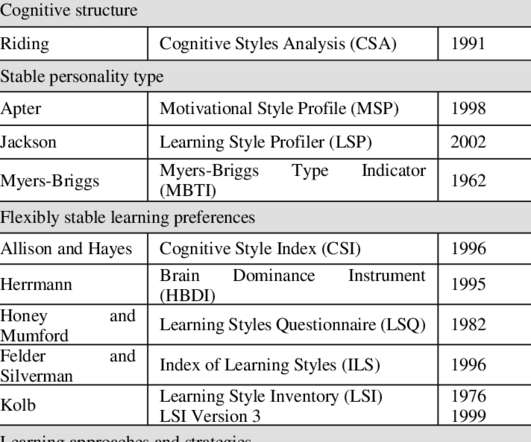Are we taking into account the culture surrounding our students?
Kapp Notes
SEPTEMBER 27, 2010
We know from a variety of research (Delpit, 1995; Gay, 2000; Nieto, 2004: Villegas & Lucas, 2002) that successful schools place their students' cultures at the center of their missions and curriculum. Culturally responsive teaching: Theory, research and practice. New York: Teachers College Press. Grossman, L. Person of the Year.














































Let's personalize your content